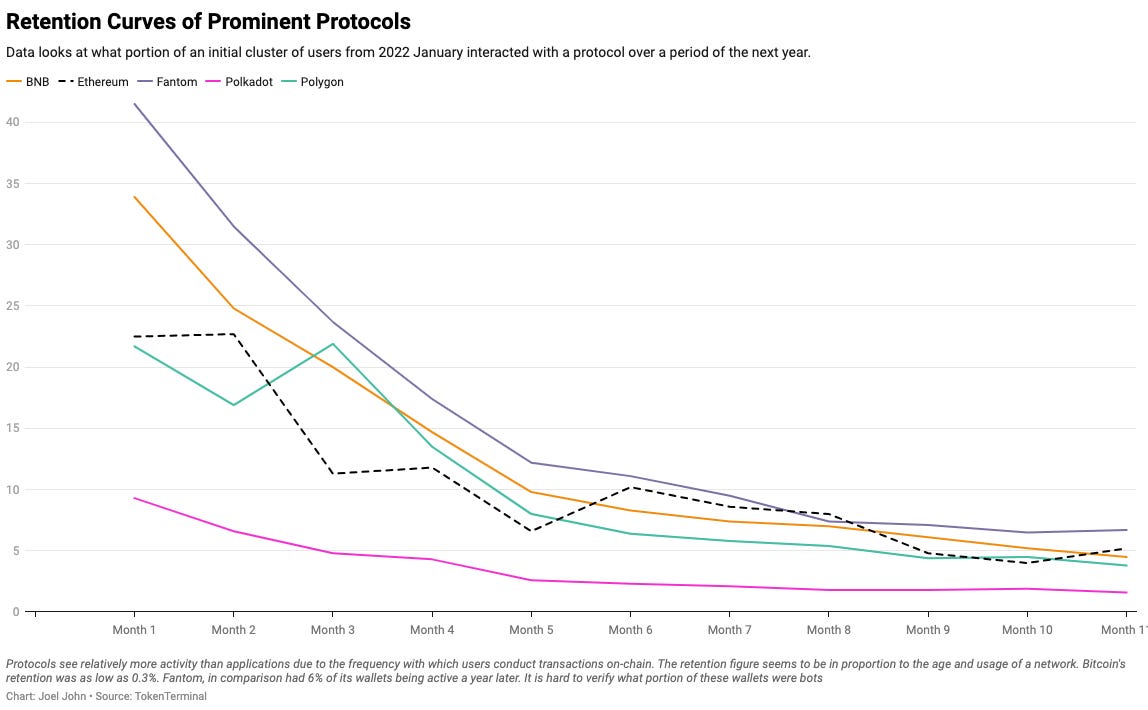Connection Corner
Your go-to guide for relationships, dating tips, and hookup advice.
Web3 User Retention: The Game of Attention in a Decentralized World
Unlock the secrets of Web3 user retention! Discover how to captivate users in a decentralized world and win the game of attention.
Understanding User Retention in Web3: Strategies for Engaging a Decentralized Audience
Understanding user retention in Web3 is crucial for the success of decentralized applications and platforms. Unlike traditional web platforms, where user engagement can often be driven by centralized entities, engaging a decentralized audience requires unique strategies that resonate with their values. For developers and marketers operating within the Web3 space, fostering a sense of community and belonging is essential. This can be achieved by implementing incentive structures that reward long-term participation, such as loyalty programs, governance tokens, or exclusive access to features that enhance user experience.
Another effective strategy for boosting user retention is emphasizing transparency and trust. Providing users with clear information about the project's roadmap, tokenomics, and community governance helps build confidence in your platform. Utilizing regular updates, engaging content, and community feedback mechanisms ensures that your audience feels heard and valued. Additionally, integrating social features that facilitate interaction among users can cultivate a vibrant community atmosphere. By prioritizing user-centric design and actively participating in discussions, platforms can significantly improve engagement and strengthen retention rates.

Counter-Strike is a popular first-person shooter game that pits two teams against each other in a battle of strategy and skill. Players can choose to be part of the Terrorists or Counter-Terrorists, completing objectives or eliminating the opposing team. For those looking to enhance their gaming experience, utilizing a bc.game promo code can provide exciting benefits and rewards.
The Psychology of Attention in Web3: How to Keep Users Coming Back
The psychology of attention is pivotal in the rapidly evolving landscape of Web3, where users are bombarded with countless digital stimuli. Understanding how to capture and maintain user attention is crucial for Web3 projects aiming for sustained engagement. One effective way to achieve this is through the use of gamification techniques. By incorporating elements like rewards, challenges, and leaderboards, platforms can create a sense of accomplishment that keeps users engaged. Additionally, personalizing user experiences through tailored content and interactive features can significantly enhance user retention, ensuring that they feel valued and connected to the community.
Building a sense of belonging is another essential aspect that influences the psychology of attention. Users are more likely to return to platforms that foster community interaction and support. Incorporating features such as forums, social sharing options, and live events can help create a vibrant environment where users feel they have a stake in the platform's success. Furthermore, leveraging user-generated content can not only keep the atmosphere lively but also empower users, reinforcing their commitment to the platform. By combining these strategies, Web3 projects can not only attract users but also cultivate a loyal base that continually engages with the ecosystem.
What Makes Users Stay? Exploring Retention Tactics in a Decentralized Ecosystem
In a decentralized ecosystem, user retention is critical for sustained growth and success. To keep users engaged, platforms must implement effective retention tactics that resonate with their target audience. One of the fundamental approaches is enhancing the user experience through seamless navigation and accessibility. By utilizing intuitive interfaces and providing comprehensive support, users are more likely to return. Additionally, incentivizing engagement with rewards or exclusive access can create a sense of community and belonging, further promoting retention.
Another essential strategy for user retention is the establishment of trust within the ecosystem. Users are more inclined to stay when they feel secure in their transactions and interactions. Implementing robust security features and transparent communication about data usage can significantly boost users' confidence. Incorporating feedback mechanisms also plays a vital role; by actively seeking user input and making necessary adjustments, platforms foster a collaborative environment where users feel valued. Ultimately, combining these tactics leads to a loyal user base eager to engage repeatedly.